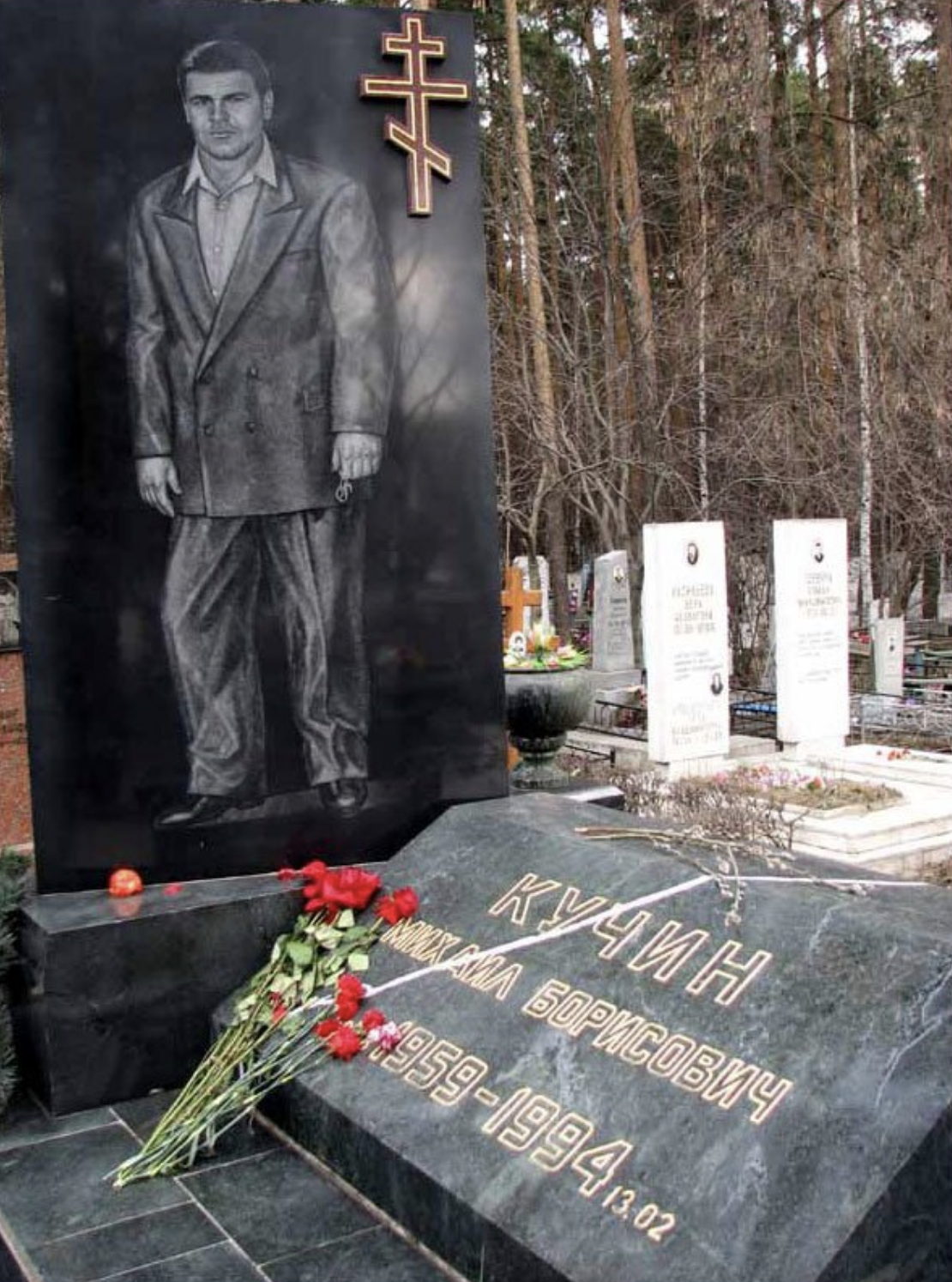Filed Under: Topic > Postsocialism > The gravestone of Yekaterinburg gangster Mikhail Kuchin
The gravestone of Yekaterinburg gangster Mikhail Kuchin

In 1994, Mikhail Kuchin, an important crime boss within the major Yekaterinburg-based syndicate established in the late 1980s by veterans of the Soviet war in Afghanistan (1979-1989), was gunned down in a drive-by shooting while walking from his mansion to his Mercedes. Kuchin had operated multiple criminal rackets out of a club called Globus, itself a union of several gangs headed by fellow Afghanistan veteran Viktor Kasintsev, who was killed in a shooting later that same year. Kuchin’s death touched off a wave of violence that saw dozens of Yekaterinburg gangsters dead as the organizations ruling the center of the city clashed with the organization tied to Uralmash, the historic heavy machine production facility. The Uralmash syndicate was populist and perceived as supporting local business against encroaching market forces, but also notorious for their brutal and enthusiastic assassins.
Kuchin’s memorial at the Shirokorechenskoy Cemetery is typical of the genre of gangster tombs that became a common and publicized phenomenon during this period of brutal violence. Such tombs inevitably display life-size mimetic representations of the fallen gangster. Typically erected sparing no expense, they tend to feature the memorialized man dressed in expensive suits and framed by representations of Orthodox Churches or crosses to emphasize their faith and piety.
Kuchin’s grave includes an additional element that became iconic (and often mocked), even if it was never imitated with regularity: he is shown holding keys to his car, like a pharaoh ready to drive away in his heavenly Mercedes. While this representation aims, perhaps, to show Kuchin in the moments before he was slain—immediately outside his vehicle—the image came to symbolize the peculiar immortality of infamous outlaws during a particularly lethal period of criminal conflict in 1990s Yekaterinburg.